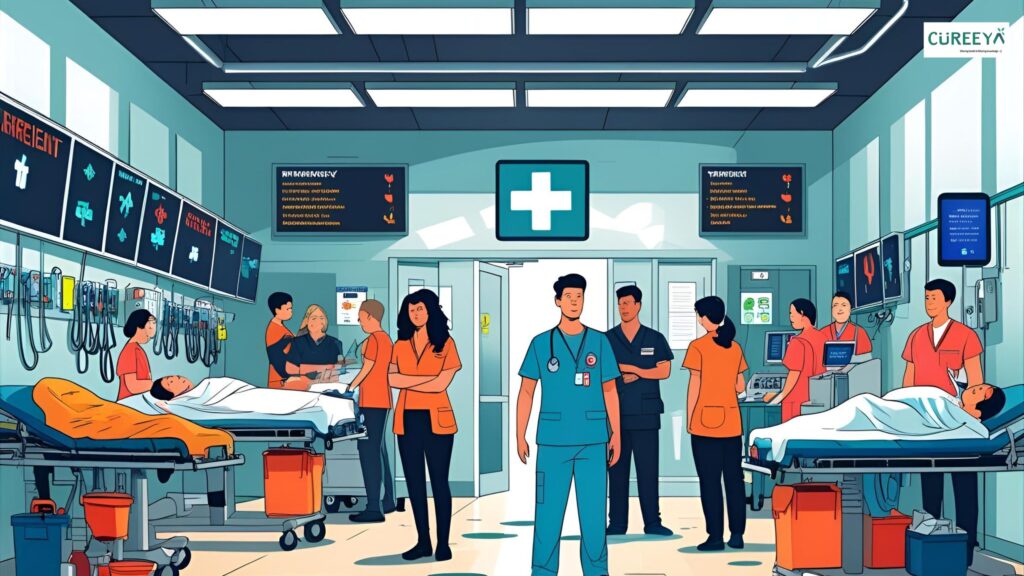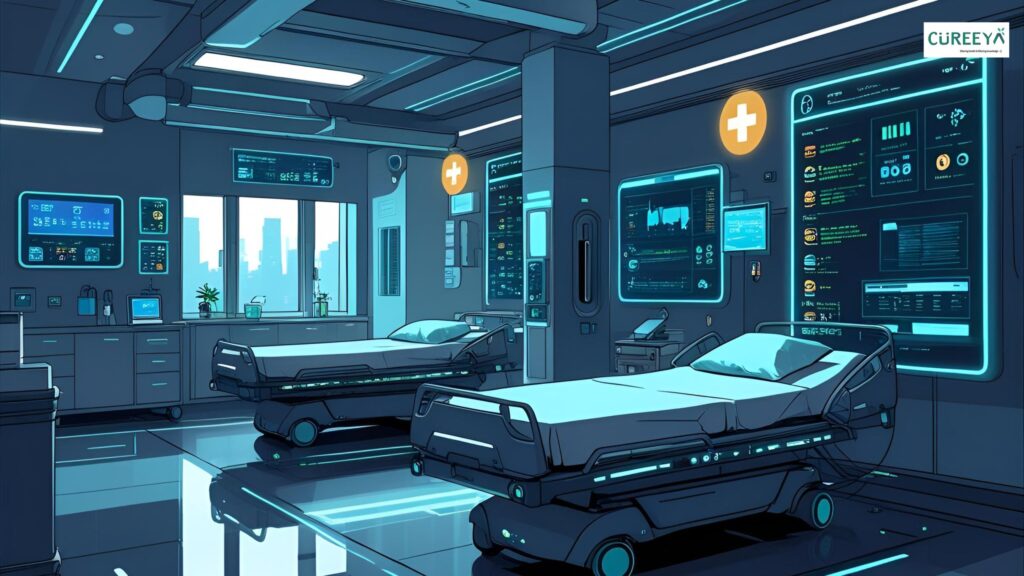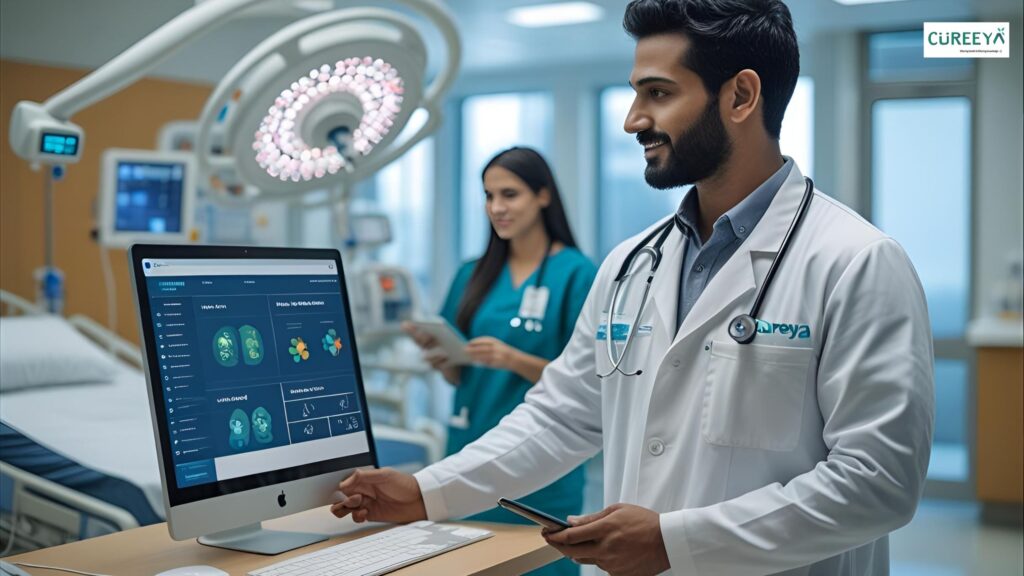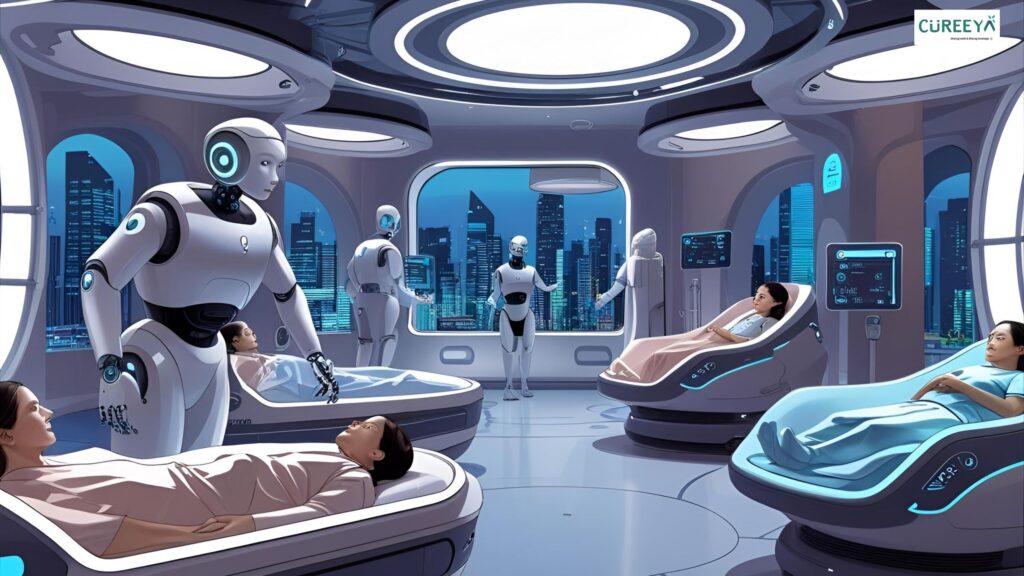Introduction: A Busy Monday at the Hospital
It’s 9 AM at a multi-specialty hospital in Delhi. The OPD waiting room is packed with patients holding files, attendants filling forms, and staff juggling calls. A frustrated patient mutters, “I’ve been waiting for an hour, just to confirm my follow-up appointment.” Meanwhile, the front desk receptionist is buried under heaps of registration forms, trying not to miss another important follow-up call.
This scene isn’t rare—it’s the everyday reality of large-scale clinics and hospitals across India. In fact, studies show that hospital staff spend up to 40% of their time on paperwork and manual coordination instead of focusing on patients (source: Healthcare IT News, 2023).
Now imagine if an intelligent hospital assistant could handle OPD management, patient follow-ups, and structured data collection automatically. No more endless calls. No more messy paper trails. Just smooth, error-free workflows.
This is exactly where Cureeya’s hospital automation solutions step in—bringing clarity to chaos.
Why Hospitals Struggle with Workflow Management

Despite advanced medical facilities, many hospitals still operate on outdated systems. The main challenges include:
-
Overloaded OPD staff – Manual patient registration, scheduling, and billing consume hours.
-
Missed follow-ups – Over 60% of patients forget or delay follow-ups without reminders (NHS Survey 2022).
-
Unstructured data – Hospitals struggle to organize patient information for research, compliance, or analytics.
-
Low patient satisfaction – Long waiting times and communication gaps affect trust and brand image.
The truth is, medical excellence alone isn’t enough. In today’s healthcare world, operational excellence matters just as much.
AI Assistants: The Silent Workforce in Healthcare

Think of AI assistants as digital staff members who never get tired, never make manual errors, and are available 24/7. Unlike basic chatbots, these assistants are trained for hospital workflows, meaning they:
-
Manage high OPD volumes by automating registrations and queue systems.
-
Send personalized reminders for medicines, follow-ups, or tests.
-
Collect and structure patient data into actionable dashboards.
-
Help staff handle multi-lingual communication in regions with language diversity.
A McKinsey study estimates that AI-powered hospital workflow solutions can improve staff efficiency by 20–30%, freeing time for doctors and nurses to focus on care.
Also Read: How Cureeya Automation Tools Are Transforming Daily Clinic Operations in 2025
How Cureeya Is Redefining Hospital Workflows

Cureeya isn’t just a tool—it’s a complete ecosystem for hospital management automation. Let’s break down how it simplifies three of the most critical workflows:
1. OPD Management Made Effortless
-
Automated patient registration with digital forms.
-
Queue management system reduces patient waiting time by up to 35%.
-
Instant doctor allocation based on specialty and patient history.
-
Integration with billing and insurance systems.
✅ Result: Patients spend less time waiting, staff handle higher OPD volumes smoothly, and errors are minimized.
2. Follow-Up Automation That Patients Actually Appreciate
-
AI reminders via WhatsApp, SMS, or email for follow-ups.
-
Personalized medicine reminders in local languages.
-
Tracking no-shows and rescheduling missed appointments.
-
Automated post-consultation surveys to improve satisfaction scores.
📊 Did you know? Nearly 76% of patients prefer digital reminders over manual phone calls (Accenture, 2023).
3. Smart Data Collection for Smarter Decisions
-
Digitized patient records organized in structured dashboards.
-
Real-time data for hospital administrators on OPD flow, follow-up adherence, and satisfaction scores.
-
Compliance-ready data storage for NABH/JCI standards.
-
Insights for marketing teams to understand patient demographics and service demand.
👉 Hospitals using structured data see a 20% faster decision-making process (Deloitte Healthcare Report, 2023).
What Most Blogs Don’t Tell You About AI in Hospitals
While many articles highlight generic benefits, here are lesser-discussed but highly impactful outcomes of adopting Cureeya’s assistants:
-
Brand Reputation Boost: Patients trust hospitals that are efficient and tech-forward. This directly influences referrals.
-
Staff Retention: Reducing repetitive workload increases staff satisfaction, lowering attrition rates.
-
Hyperlocal Adaptability: Cureeya’s assistants can be localized to regional languages and cultural nuances.
-
Data Monetization: Anonymized patient trend data can help hospitals collaborate with pharma, insurers, or research institutes.
Also Read: Why Reviews and Testimonials Are the New Prescription for Patient Trust in 2025
Frequently Asked Questions (FAQs)
Q1. How does Cureeya improve OPD management compared to traditional methods?
Cureeya eliminates manual bottlenecks by digitizing registrations, queues, and doctor allocation, cutting patient wait times by up to 35%.
Q2. Will patients accept automated follow-ups?
Yes—76% of patients actually prefer automated digital reminders. Cureeya personalizes reminders to languages and platforms patients use most, increasing engagement.
Q3. Is Cureeya suitable only for large hospitals?
Not at all. Cureeya scales easily—from a 30-bed clinic to 1000-bed hospitals. Even mid-sized practices benefit from structured data and automated follow-ups.
Q4. How secure is the patient data collected?
Cureeya complies with HIPAA, NABH, and GDPR standards, ensuring end-to-end encryption and secure access.
Q5. Can Cureeya integrate with existing hospital systems?
Yes, it integrates seamlessly with EMRs, billing systems, and insurance databases for unified workflows.
The Future of Hospital Workflows

As healthcare competition grows, operational efficiency will be the new differentiator. Hospitals that adopt automation early will not only save costs but also build stronger patient trust.
Cureeya’s intelligent assistants are not replacing humans—they are empowering them. Imagine doctors focusing 100% on patient care, while Cureeya handles everything else in the background. That’s the future Cureeya is building today.
Key Takeaways
-
Hospitals lose 35-40% of staff time to paperwork and managing manual workflows.
-
AI assistants like Cureeya simplify OPD management, follow-ups, and data collection.
-
Cureeya reduces waiting times by 33%, improves follow-up adherence by 74%, and accelerates decision-making by 22%.
-
Beyond efficiency, it also boosts patient trust, staff satisfaction, and hospital reputation.
-
With compliance, security, and scalability, Cureeya is ready for hospitals of all sizes.



